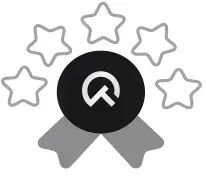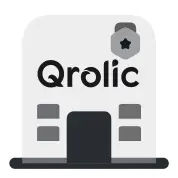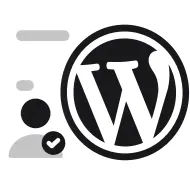Quick Summary:
- WordPress security is vital and never-ending.
- Use strong passwords and keep everything updated.
- Choose good hosting, and actively monitor your site.
- Always back up your site and test restoration.
Table of Contents
- What Does “Site Security” Actually Mean?
- Why Site Security Matters for WordPress & Web Projects
- 1. High Attack Surface
- 2. Reputation & Trust
- 3. Data Loss & Cost
- 4. Compliance & Best Practice
- 5. SEO & Performance Impact
- How We Secure Sites: At a Glance
- 1. Audit & Assessment
- 1.1 Initial Consultation & Discovery
- 1.2 Vulnerability Scan & Code Review
- 1.3 Performance & Core Web Vitals Check
- 1.4 Risk Prioritisation
- Practical Tip
- 2. Hardening & Best Practice Implementation
- 2.1 Platform & Hosting Hardening
- 2.2 WordPress Specific Hardening
- 2.3 Database & Server Configuration
- 2.4 Plugin & Theme Review
- 2.5 Performance & Security Combined
- Practical Tip
- 3. Monitoring & Alerts
- 3.1 Real-Time Monitoring
- 3.2 Regular Scans & Reports
- 3.3 Alerts & Incident Notifications
- 3.4 Analytics & User Behaviour
- Practical Tip
- 4. Backup & Recovery
- 4.1 Backup Strategy
- 4.2 Recovery Plan
- 4.3 Fail-Safe & Redundancy
- 4.4 Documentation
- Practical Tip
- 5. Ongoing Maintenance & Updates
- 5.1 Software Updates
- 5.2 Plugin-Theme Audit
- 5.3 Performance & Core Web Vitals
- 5.4 Content & SEO Integrity
- 5.5 Security Training & Access Control
- Practical Tip
- 6. Incident Response & Performance Review
- 6.1 Incident Response Plan
- 6.2 Post-Incident Review
- 6.3 Performance & Metrics Review
- Practical Tip
- 7. Specific Strategies for WordPress Sites
- 7.1 Block Theme & Plugin Repositories
- 7.2 Check Always for Hidden Malware
- 7.3 Implement HTTP Security Headers
- 7.4 Use Web Application Firewall (WAF)
- 7.5 Limit Plugin Count & Check Quality
- 7.6 Harden wp-config.php & File Structure
- 7.7 Regularly Change Secrets
- Practical Tip
- 8. Benefits of a Strong Security Posture
- 8.1 Improved Reliability & Uptime
- 8.2 Enhanced SEO & Brand Trust
- 8.3 Lower Cost of Ownership
- 8.4 Faster Performance
- 8.5 Scalability & Growth Ready
- Practical Tip
- 9. When to Do a Security Review & How Often
- 10. Steps to Get Started (Checklist for Your Business)
- 11. Why Choose Qrolic Technologies for Your Site’s Security
- Deep WordPress & Web Development Expertise
- Performance + Security Focus
- Proactive Support & Maintenance
- Transparent Process & Client Collaboration
- Risk-Free Trial / Consultation
- 12. Common Myths & Mistakes About Website Security
- Myth: “I installed a security plugin, so I’m safe.”
- Mistake: Ignoring Updates Because “It’s Working”.
- Myth: “My website is small, so nobody will target it.”
- Mistake: Backups are Rare or Stored On Same Server.
- Myth: “Our hosting company handles security.”
- Mistake: No Incident Plan.
- 13. Security & SEO: How They Interact
- Search Engine Trust & Rankings
- User Experience & Conversion
- Performance Metrics
- Brand Reputation
- Structured Data & HTTPS
- 14. Advanced Security Topics (for High-Traffic or Enterprise Sites)
- 14.1 DDoS Mitigation
- 14.2 Server-Side Architecture
- 14.3 Zero-Trust Access
- 14.4 Security-By-Design
- 14.5 Data Encryption & Privacy
- 14.6 Incident Forensics & Audit Trails
- Practical Tip
What Does “Site Security” Actually Mean?
Website security isn’t just about having a password or firewall. It means establishing a systematic, ongoing approach to ensure your website remains safe, trustworthy, and resilient. At its core, site security covers areas such as:
- Preventing unauthorized access or malicious attacks (hacking, malware, brute force).
- Protecting the integrity of your site’s code and data (so visitors see the right content and your database remains intact).
- Ensuring consistent uptime and performance (so security flaws don’t degrade user experience).
- Adhering to best practices for backups, updates, monitoring, and rapid recovery.
In other words: security isn’t “set once and forget.” It’s a process of continuous vigilance and improvement.
Why Site Security Matters for WordPress & Web Projects
For businesses using WordPress (and web projects in general), site security is particularly critical for these reasons:
1. High Attack Surface
WordPress is highly popular and therefore a frequent target for automated attacks, bot-nets, plugin exploits, etc. A small vulnerability can escalate quickly.
2. Reputation & Trust
If your site gets hacked or is running malware, visitors (and search engines) lose trust. That can damage your brand, and SEO rankings decline.
3. Data Loss & Cost
Breaches can cause data loss (client info, orders, content), downtime, and cost you time, money and credibility.
4. Compliance & Best Practice
Security isn’t optional — many industries have regulatory obligations (data privacy, PCI for e-commerce). Using proper security protects you legally and operationally.
5. SEO & Performance Impact
Security issues can slow your site, trigger warnings in browsers or search results (“This site may be hacked”), harming traffic and conversions.
Given those compelling reasons — keeping sites secure needs to be built into how you build, maintain and operate them.
How We Secure Sites: At a Glance
At Qrolic Technologies we follow a structured, proven process to secure websites. The key pillars include:
- Audit & Assessment
- Hardening & Best Practice Implementation
- Monitoring & Alerts
- Backup & Recovery
- Ongoing Maintenance & Updates
- Incident Response & Performance Review
We’ll go through each step in detail, with practical tips you can apply.
1. Audit & Assessment
Before any security improvement, you must understand the current state.
1.1 Initial Consultation & Discovery
- What platform is the site built on? E.g., WordPress, WooCommerce, custom code.
- What theme/plugins/custom code are in use? Are they up-to-date? Are there known vulnerabilities?
- What hosting environment? Shared hosting, VPS, dedicated server, managed WordPress hosting?
- What level of traffic, user-load, and sensitivity of data (transactions, user data)?
- Has the site ever been compromised or flagged by search engines?
This gives us a baseline to build the security plan.
1.2 Vulnerability Scan & Code Review
- Use security scanning tools (e.g., WP core security scanners, plugin vulnerability databases, server logs) to identify existing open vulnerabilities (outdated code, insecure permissions, malicious files).
- Review code (theme, custom plugins) for insecure practices: e.g., SQL injection, unfiltered user input, cross-site scripting (XSS).
- Review hosting environment: are file permissions correct? Are PHP versions up-to-date? Is SSL enabled? Is the server hardened?
1.3 Performance & Core Web Vitals Check
Security and performance go hand-in-hand. Slow sites may offer attackers more time, may be vulnerable to denial-of-service flows, and may have unmaintained code. At Qrolic we check Core Web Vitals, page-speed metrics, server response times as part of the audit.
1.4 Risk Prioritisation
Once vulnerabilities are identified, we categorise them: critical (immediate fix), medium (fix within days/weeks), and long-term improvements. This helps the business understand what must be addressed first, and what can wait.
Practical Tip
Run a free health-check: check version of WordPress, check plugin list for “last updated” date, check server PHP version (should ideally be PHP 8.x+ or latest stable). If they’re outdated, you’ve already got high-risk items.
2. Hardening & Best Practice Implementation
Having identified areas of weakness, the next step is to harden the site.
2.1 Platform & Hosting Hardening
- Ensure the hosting environment is secure: latest OS patches, firewall settings, intrusion-detection enabled.
- Enforce SSL/TLS for all pages, not just login/checkout. Visitors expect “https”, and browsers will warn if non-secure.
- Set correct file and folder permissions (e.g., WordPress “wp-content” should be writable for updates but not globally open).
- Remove or disable unused themes and plugins. Extra code equals extra risk.
2.2 WordPress Specific Hardening
- Ensure WordPress core, theme, and plugins are updated to latest versions.
- Change the default login URL (optional) and enable multi-factor authentication (MFA) for admin accounts.
- Limit login attempts and implement IP blocking for brute-force.
- Use the “least privileges” concept: Only give users/admins the access they need.
- Disable file editing from the WordPress dashboard (wp-config constant:
DISALLOW_FILE_EDIT). - Move the wp-login page or protect it behind a layer (e.g., HTTP auth or custom login).
2.3 Database & Server Configuration
- Use unique table prefixes (not the default
wp_). - Use strong passwords for database, FTP/SFTP, SSH.
- Disable remote database access if not needed.
- Ensure backups are stored offsite and encrypted.
- Configure server to hide version numbers, disable directory listing, limit information leakage.
2.4 Plugin & Theme Review
- Use only trusted, well-maintained plugins/themes from reputable sources. Remove ones that haven’t been updated in >1-2 years.
- For custom-developed code, implement code reviews for security vulnerabilities (SQL injection, XSS, CSRF).
- Use fewer plugins when possible: the more plugins, the greater risk and maintenance burden.
2.5 Performance & Security Combined
- Speed up your site: a faster site reduces time windows for attacks (for example, less time for bots to exploit).
- Use a Content Delivery Network (CDN): this not only speeds up content but can block malicious traffic and distribute load.
Practical Tip
Install a reliable security plugin or service that supports: firewall (WAF), malware scanning, login hardening, reputation monitoring. Combine with server-level controls for best effect.
3. Monitoring & Alerts
Security doesn’t stop once you harden – you must continuously monitor.
3.1 Real-Time Monitoring
- Monitor login activity: unusual login attempts from strange IPs, multiple failed logins, admin account usage from new locations.
- Monitor file changes: any unexpected modification of core files, theme files, plugin files.
- Monitor uptime and traffic spikes: a sudden spike may indicate a bot attack or DDoS.
3.2 Regular Scans & Reports
- Schedule daily/weekly scans for malware, suspicious code, outdated software.
- Generate reports (security logs, login attempts, backup status) and review them to identify patterns.
3.3 Alerts & Incident Notifications
- Configure alerts for critical events: e.g., new admin user created, plugin/theme installation, file change.
- Set up notifications via email or chat (Slack, WhatsApp) to ensure timely responses.
3.4 Analytics & User Behaviour
- Use analytics to monitor user behaviour: if you see unusual bounce rates, strange referrer spikes, or visits from proxies/bots—it might point to attack.
Practical Tip
Set up a dashboard (could be via hosting control panel or security tool) that shows key metrics: failed logins, site uptime, backup success/failure, plugin version status. Review this weekly at minimum.
4. Backup & Recovery
No security plan is complete without a solid backup and recovery strategy — because eventually something may happen, and how you respond is critical.
4.1 Backup Strategy
- Define backup frequency: ideally daily for dynamic sites (e-commerce or high-traffic) and at least weekly for static corporate sites.
- Ensure backups include everything: database, files, SSL certificates, configurations.
- Store backups off-site (not on same server), preferably in a geographically separate location or cloud storage.
- Maintain multiple backup versions (e.g., 30 days of backups) so you can roll back to an earlier date if needed (in case malicious code was introduced unnoticed).
4.2 Recovery Plan
- Define steps for recovery: how to restore database, how to upload files, how to switch DNS if needed.
- Test the recovery process periodically — you don’t want to find out it fails when you really need it.
4.3 Fail-Safe & Redundancy
- Consider redundant hosting or fail-over if your site is mission-critical.
- Use staging environments: always test updates and changes in staging before pushing to live site. This limits the chance of a bad update causing downtime or vulnerability.
4.4 Documentation
- Document the backup schedule, backup storage location, recovery steps and key contacts.
Practical Tip
Automate backups, but also include manual checks monthly to ensure backups are complete, restorable, and the process works. Without it, you may find that certain files or the database weren’t backed up properly.
5. Ongoing Maintenance & Updates
Security is not a one-time project; it’s continuous.
5.1 Software Updates
- Update WordPress core, themes, and plugins as soon as stable versions are released (after testing in staging).
- Keep PHP version current (security updates stop earlier versions), as well as other server-side libraries.
5.2 Plugin-Theme Audit
- Periodically review the plugin and theme list. Remove any orphaned/unused items.
- Replace outdated plugins with actively maintained alternatives.
5.3 Performance & Core Web Vitals
- Regularly monitor performance metrics: page load time, first-paint, interactivity. A slower site may signal hidden issues (e.g., compromised code, server overload).
- Optimise images, caching, server response to maintain speed.
5.4 Content & SEO Integrity
- Ensure content remains secure (no unauthorized edits). Use revision logs to track changes.
- Monitor search-console tools: if search engines flag your site as hacked or malicious, you need immediate action.
5.5 Security Training & Access Control
- Train anyone who has access (admin, content editors) on best practices: secure passwords, recognition of phishing, use of MFA.
- Review user access monthly: remove permissions for users who no longer need them.
Practical Tip
Block “admin” username if possible. Enforce password policies (minimum length, forced password changes for old accounts) and activate multi-factor authentication for all admin/editor roles.
6. Incident Response & Performance Review
Even with the best practices, incidents may still occur — so you need to be ready and improve post-incident.
6.1 Incident Response Plan
- Define triggers: e.g., detection of malware, site defacement, data breach, unauthorized access.
- Define roles: who does what (developer, server admin, communication lead).
- Define communication: internal team, clients, possibly legal / PR if public breach.
- Define containment: isolate compromised server, restore from clean backup, update credentials, run full scan.
6.2 Post-Incident Review
After a breach or downtime you should:
- Analyse root cause: was it an outdated plugin? Weak password? Misconfigured server?
- Update security plan to patch that weak link.
- Document what happened, how it was handled, and what changed.
- Monitor further for re-occurrence of the same pattern.
6.3 Performance & Metrics Review
- Review metrics post-incident: did traffic drop? Did conversion decline? How long was site down?
- Review Core Web Vitals before and after: did performance suffer?
- Use lessons learned to improve both security and performance going forward.
Practical Tip
Maintain an incident log: date, time, what happened, how detected, how resolved, lessons. Over time you’ll build an internal knowledge base that helps you avoid repeating the same mistakes.
7. Specific Strategies for WordPress Sites
Since many businesses rely on WordPress, here are additional strategies tailored to WP.
7.1 Block Theme & Plugin Repositories
- Only install themes/plugins from trusted sources (official repository, premium vendors).
- Remove “nulled” or pirated themes — they often have malware embedded.
7.2 Check Always for Hidden Malware
- Use tools like WP-Scan or Sucuri to scan for known vulnerabilities and malicious code.
- Check for hidden files (in wp-content/uploads, user directories) that could host rogue scripts.
7.3 Implement HTTP Security Headers
- Use HTTP headers like
Content-Security-Policy,X-Frame-Options,Strict-Transport-Security,X-Content-Type-Options.
These headers protect against click-jacking, MIME sniffing, etc.
7.4 Use Web Application Firewall (WAF)
- Services like Cloudflare, Sucuri Firewall, or plugin-based WAFs help block malicious traffic before it reaches your site.
7.5 Limit Plugin Count & Check Quality
- Each plugin adds risk — fewer is better.
- Regularly review plugin update history, user ratings, compatibility with latest WP version.
7.6 Harden wp-config.php & File Structure
- Move wp-config.php one directory up if possible.
- Add salts and unique keys in wp-config.
- Define
WP_DEBUGas false in production. - Disable
XML-RPCif unused (it’s a common attack vector).
7.7 Regularly Change Secrets
- Change database password, FTP/SFTP password, and WordPress salts periodically.
- Ensure
ABSPATH/wp-content/uploadsis not publicly executable.
Practical Tip
Schedule a quarterly “security week” where you update all plugins, test backups, review users and permissions, and run a full malware scan.
8. Benefits of a Strong Security Posture
Securing your site properly brings multiple measurable benefits:
8.1 Improved Reliability & Uptime
Your site runs smoothly without downtime caused by attacks or misconfigurations. This leads to better user experience and improved conversions.
8.2 Enhanced SEO & Brand Trust
Sites flagged as safe by browsers/search engines perform better. A hacked site will see traffic drop, search engine penalties, or even removal from index. A secure site builds trust with visitors.
8.3 Lower Cost of Ownership
Preventing security incidents is cheaper than cleaning up after one. Maintenance and prevention cost far less than recovery, reputational damage or legal fines.
8.4 Faster Performance
Security hardening often overlaps with performance optimisation (removing unused plugins, caching, clean code) — so you get speed and security together.
8.5 Scalability & Growth Ready
A strong security foundation allows you to scale with confidence: high-traffic events, new features, more users — without exposure to avoidable risk.
Practical Tip
Track metrics like site uptime %, failed login attempts, malware scans passed, backup restore time — present these in your quarterly reviews to justify security investment.
9. When to Do a Security Review & How Often
Security is not “once and done.” Here’s how often you should review:
- Every major update: When WordPress core, theme, or major plugin version changes.
- Monthly: Review logs, backups, and run quick malware scan.
- Quarterly (every 3-4 months): Full audit – code review, performance check, backup restore practice.
- After any incident: Immediately schedule a full review if you detect compromise or suspicious activity.
- Before major traffic/events: If you’re running a campaign or expecting high traffic, review security to avoid downtime or vulnerability.
This ongoing cadence ensures you stay ahead of threats rather than react after the fact.
10. Steps to Get Started (Checklist for Your Business)
Here’s a practical checklist you or your WP agency can follow:
- Initial Audit
- Review WordPress version, theme/plugins, PHP version, server environment.
- Run vulnerability scan.
- Review performance (loading speed, Core Web Vitals).
- Identify critical risk areas.
- Hardening Setup
- Update core/theme/plugins.
- Enable SSL/TLS for all traffic.
- Set secure file permissions.
- Remove unused themes/plugins.
- Enable MFA for admin accounts.
- Install WAF or firewall.
- Configure HTTP security headers.
- Backup & Recovery Setup
- Implement automated daily/weekly backups (files + database).
- Store offsite backups.
- Test restore procedure at least once.
- Monitoring Implementation
- Install monitoring tools (login attempts, file changes, uptime).
- Set alert thresholds.
- Configure reporting.
- Maintenance Process
- Set monthly review schedule for updates & logs.
- Set quarterly full audit schedule.
- Review user access and permissions.
- Conduct performance optimisation tied to security.
- Incident Response Plan
- Document roles/responsibilities in event of incident.
- Ensure contact info is up-to-date.
- Pre-define steps for isolate, restore, notify, fix root cause.
- User/Team Training
- Train admins/users on strong passwords, phishing awareness, proper access use.
- Limit user access to “need to know”.
- Review & Improve
- After each major change or incident, review what went well, what didn’t.
- Update security process accordingly.
- Engage Expert Support
- If your website is business-critical, consider outsourcing ongoing security and maintenance to a specialist agency.
- Measure & Report
- Track metrics: uptime, failed logins, malware detection, backup success/failure.
- Report quarterly to stakeholders or management to show value of security investment.
11. Why Choose Qrolic Technologies for Your Site’s Security
At Qrolic Technologies (based in Rajkot, Gujarat), we specialise in service levels that go beyond standard website development — we build websites designed for long-term performance, scalability and security.
Here’s how we stand out:
Deep WordPress & Web Development Expertise
We have strong experience in WordPress core development, custom theme/plugin development, high-traffic websites and code refactoring.
Performance + Security Focus
We don’t treat security and performance as separate. Our development practice integrates fast-load, clean code and secure architecture from the ground up.
Proactive Support & Maintenance
We offer ongoing maintenance plans including updates, monitoring, backups, performance audits — allowing you to stop worrying about “Will my site get hacked?” and focus on growth instead.
Transparent Process & Client Collaboration
We keep you in the loop: you get reports, tracking of key metrics, clear communication — so you understand what’s being done and why.
Risk-Free Trial / Consultation
We even offer risk-free initiation: first few hours of development on us, no upfront fee and no long-term commitment. This helps you evaluate before committing.
If your website is crucial to your business, you deserve a partner that understands both the creative & technical sides — design, user experience, performance and security. We believe in long-term relationships, not just one-time projects.
12. Common Myths & Mistakes About Website Security
Myth: “I installed a security plugin, so I’m safe.”
Reality: A plugin is only one piece. If your hosting environment is weak, or you have outdated code/themes, you’re still vulnerable. Security is multi-layered.
Mistake: Ignoring Updates Because “It’s Working”.
Outdated themes/plugins often hold known vulnerabilities — hackers exploit these. Regular updates are essential.
Myth: “My website is small, so nobody will target it.”
Reality: Automated bots don’t care about size. They scan the web indiscriminately and exploit weak points everywhere.
Mistake: Backups are Rare or Stored On Same Server.
If the server is compromised, your backups are gone too. Off-site, versioned backups are critical.
Myth: “Our hosting company handles security.”
Hosting security is important, but you are responsible for code, plugins, themes, account credentials and site-specific vulnerabilities.
Mistake: No Incident Plan.
When something goes wrong, panic sets in. Having a documented plan, roles, and process beforehand saves hours (or days) of chaos.
By recognising these myths and avoiding common mistakes, you’ll protect your site more effectively.
13. Security & SEO: How They Interact
Search Engine Trust & Rankings
Search engines like Google Search penalise sites that are hacked, contain malware, or have been flagged for suspicious activity. By maintaining robust security you reduce risk of penalties or deindexing.
User Experience & Conversion
Secure sites load faster, offer safe browsing (HTTPS padlock), and won’t trigger browser warnings (“This site may be hacked”). Visitors trust and convert more easily.
Performance Metrics
Sites with better performance often have stronger security postures (minimal bloat, updated code, efficient architecture) — which leads to better Core Web Vitals and SEO benefits.
Brand Reputation
A security breach can be public and visible. If your brand is damaged, links and referrals may drop — which impacts your SEO and visibility. Preventing breaches avoids these ripple effects.
Structured Data & HTTPS
Secure sites can safely use structured data, Google-AMP, service workers, PWA functionality — giving SEO lift. Also HTTPS is a ranking factor and trust signal.
In short: security isn’t ancillary — it’s foundational to your SEO and growth strategy.
14. Advanced Security Topics (for High-Traffic or Enterprise Sites)
If your website is mission-critical (e-commerce, media, large traffic), you may need additional layers:
14.1 DDoS Mitigation
Use a CDN + WAF + load-balancing and rate limiting to absorb heavy traffic spikes. Without this, a security issue could become a performance bottleneck.
14.2 Server-Side Architecture
Use containerisation, isolation (microservices), separate environments for production/staging, hardened server OS, regular penetration testing.
14.3 Zero-Trust Access
Enforce least-privilege access for all team members, log all access, use VPNs or secure tunnels, restrict SSH access, audit user sessions.
14.4 Security-By-Design
When building high-traffic or custom apps/themes: security must be built into architecture (input validation, secure APIs, encryption of sensitive data, secure session management, tokenisation, etc.)
14.5 Data Encryption & Privacy
If you store personal/financial data: use encrypted databases, enforce TLS for all connections, implement privacy-compliant frameworks (GDPR, CCPA, etc) and ensure backups are encrypted.
14.6 Incident Forensics & Audit Trails
Keep logs for long periods; ensure you have forensic tools in place to trace attacks, identify root cause, preserve evidence (especially if legal action is possible).
Practical Tip
If you’re planning a large campaign, product launch, or expect sudden traffic surge — schedule a “security readiness review” 2-3 weeks ahead: check scalability, backups, firewall rules, and perform load testing.






